Cracking the Elderberry Code
Can California Farmers
Grow This Native Plant into the
Booming Global Market?
By Matt Kettmann | December 14, 2023
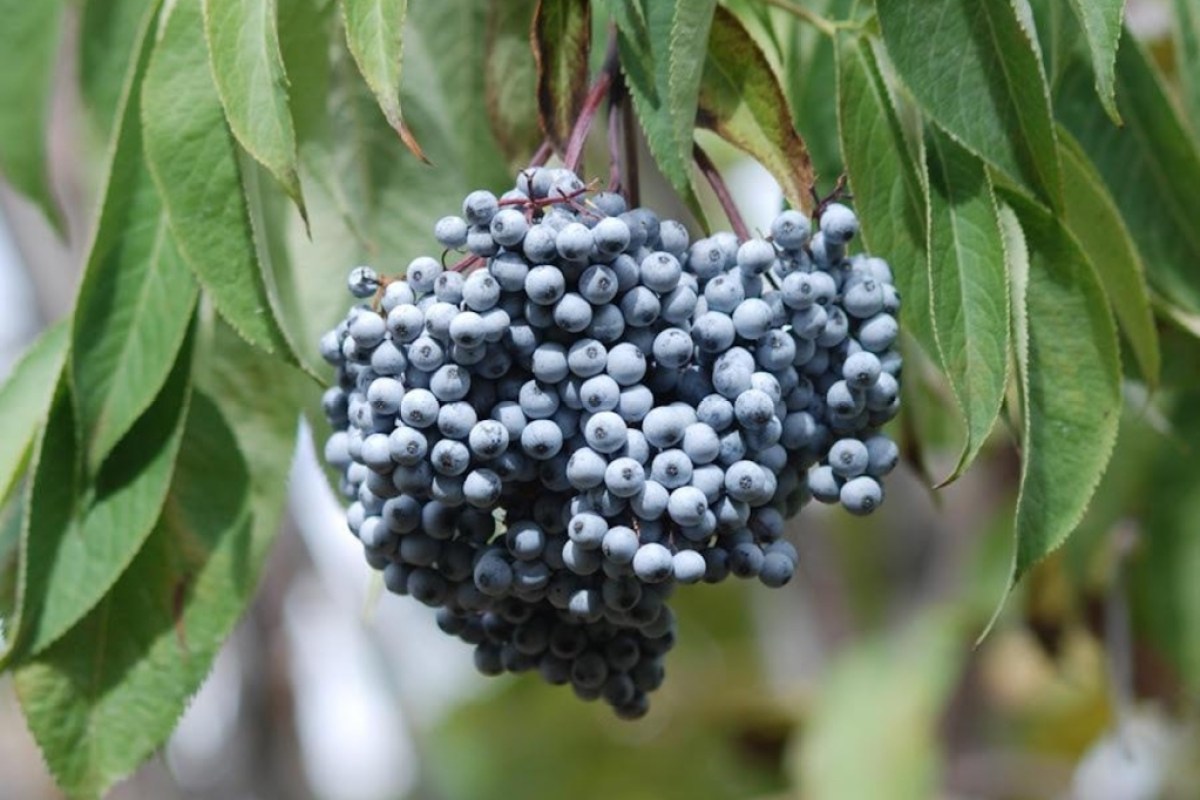
As indigenous peoples across the world discovered eons ago, every part of the elderberry plant serves a purpose for our survival.
The tart, tiny fruits are loaded with illness-fighting nutrients. The flowers, bark, and leaves address myriad medicinal needs. The wood itself can be shaped into hunting bows, fire-starters, flutes, and much more. Even just the elderberry’s presence improves a landscape, attracting birds and insects to pollinate nearby plants.
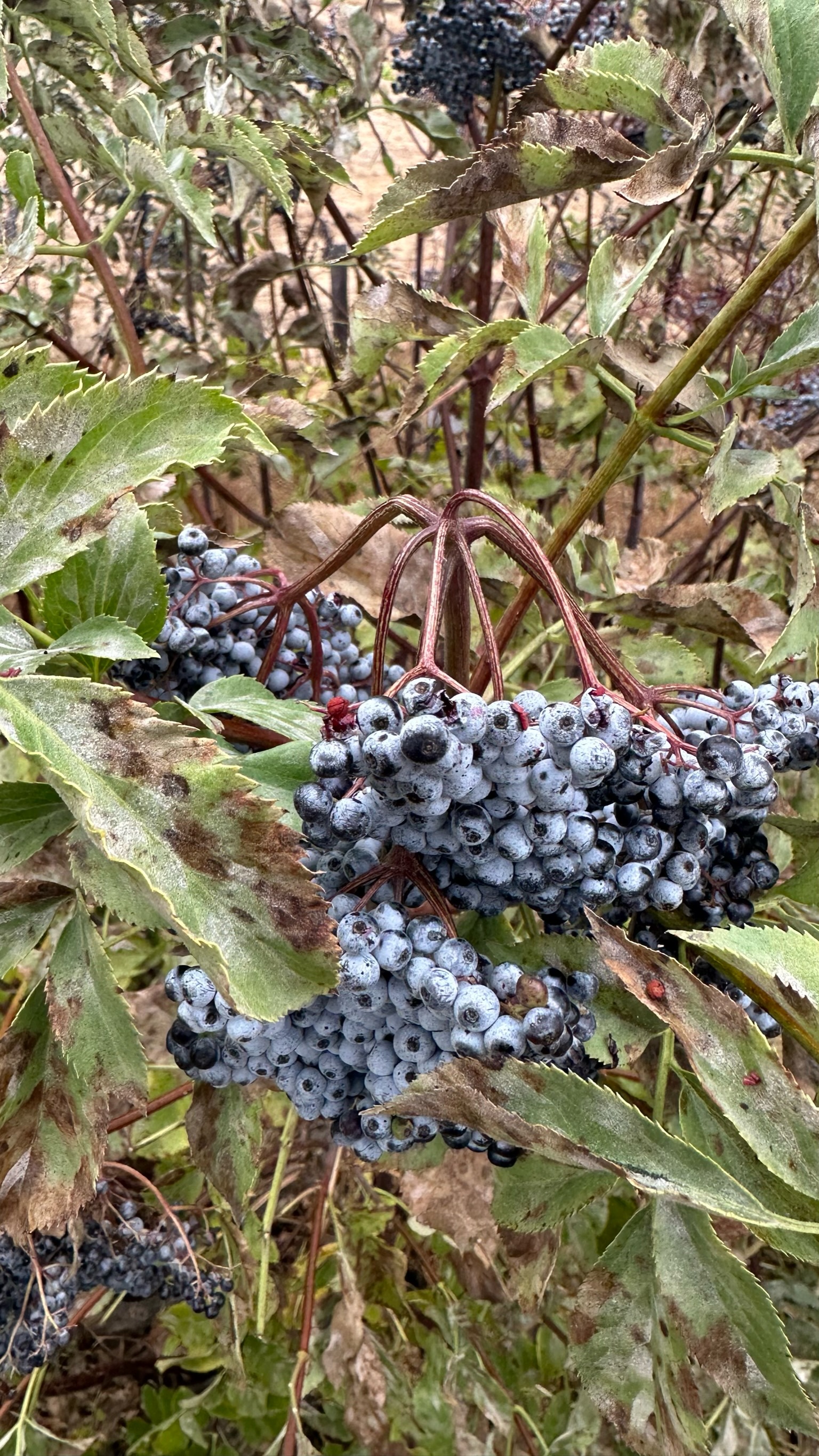
This native knowledge is now backed by modern science, revealing elderberry’s effectiveness in boosting the immune system, treating skin conditions, and enhancing the biodiversity of ecosystems that are increasingly compromised by big farms and bigger cities.
That all makes elderberry a very reliable source of today’s primary survival tool: money.
The global elderberry industry is booming. The wellness supplement market alone exceeded $1 billion in sales in 2023 — the pandemic triggered a significant, sustained bump — and is expected to nearly triple in a decade. The vast bulk of the berries juicing the industry currently comes from overseas operations in Europe and Asia, but the agricultural American market is already valued at $320 million, with 30 percent growth predicted over the decade.
That American pie, though, is being almost entirely eaten by farmers east of the Rockies, where the black elderberry became a significant commercial crop about 20 years ago. West of the Rockies, where the blue elderberry is the dominant native species, our farmers have barely warmed the oven.
And yet, without any help whatsoever, the hearty blue elderberry grows like a weed across countless microclimates, from valley floors and mountaintops to abandoned lots and highway ditches. It’s incredibly drought-tolerant and climate-change-resilient — bonus points in a dry region that’s getting warmer — and a perfect partner for fighting erosion and enhancing the productivity of nearby crops everywhere it exists.
Given such a miraculous meld of sustainability and profitability, why haven’t California farmers embraced the elderberry?
Into the Wild Blue
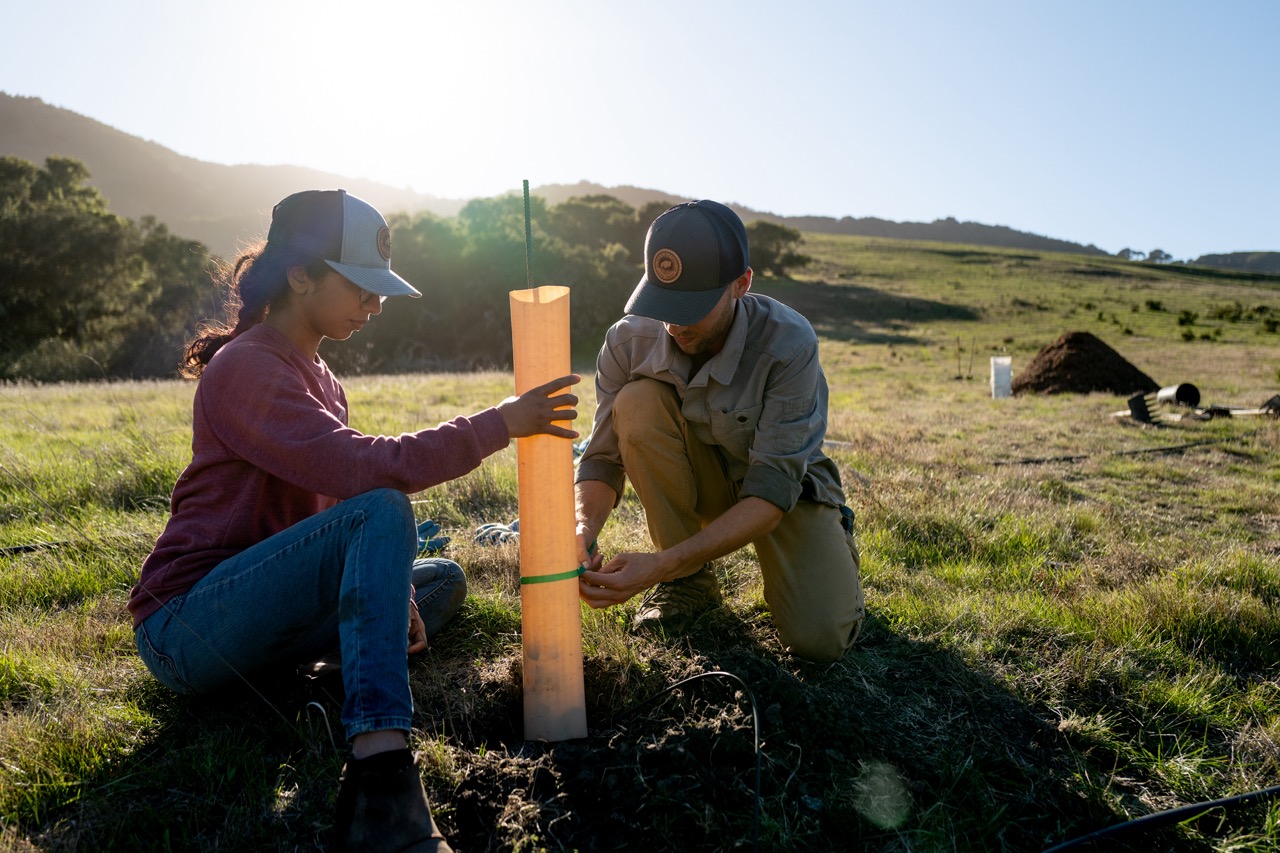
Answering this question is the goal of a five-year, nearly $5 million federally funded farming experiment that kicked off last month in Santa Barbara County. Spearheaded by the White Buffalo Land Trust, a regenerative farming-focused nonprofit founded in Summerland five years ago, the project will explore how to best propagate and cultivate the blue elderberry on a handful of small Central Coast farms.
Growing the plant is just step one; selling it is dilemma deuce. So they’re collaborating with a just-built facility in Santa Maria to simultaneously investigate how to best process the fruit (and possibly flowers, leaves, etc.) into finished goods. There’s an indigenous component as well, with the Santa Ynez Band of Chumash prepared to grow a nursery, develop workforce skills, and harvest the new plantings for their cultural needs.
Though wading mostly into the unknown, the team is not flying blind when it comes to the challenges they face by trying to tame blue elderberry, a k a Sambucus cerulae. Farmers of the American black elderberry, or Sambucus canadensis, are much further down the road. They benefit from a century’s worth of breeding that’s created easily grown, reliable yielding varieties whose berries can be sold right into the global market from farms in the Midwest, Northeast, and Pacific Northwest.
The blue elderberry is a much wilder beast, considered harder to grow from the get-go and then delivering inconsistent harvests from plant to plant. It’s also unclear whether blue elderberry, which may have different flavors and nutrient loads than the black, can so easily slip into the existing marketplace.
If these farmers do solve the elderberry equation, we’ll be witnessing the baby steps into what could become a multimillion-dollar agricultural industry across California and beyond. Or it could merely develop into a way for farmers to extract a little bit more value from their land, selling their products straight to consumers and integrating the plants into agrotourism offerings. Or maybe the blue elderberry will resist commodification and wind up remaining wild and free.
“What appealed to us is the fact that this dang plant is all over the place,” said Ed Seaman, who’s participating in the project as the proprietor of Restoration Oaks Ranch. “We believe in agriculture as part of nature, not as a replacement to nature.”
The sustainably minded operation, located just below the Nojoqui Grade along Highway 101, is home to educational tarantula and toad tours and popular you-pick blueberry fields, where at least one elderberry plant is already volunteering to grow. He’s curious to learn if they can be grown like blueberries, whether they can scale up regionally to sell to bigger processors, and if customers will pay a premium to support the ecological benefits.
“As a small farm community, can we collaborate and consolidate our resources to craft this product and get it to market in a way that competes with the global food system?” asked Seaman. “We’re right in the beginning of this. We don’t know if it’s gonna work yet or not.”
Digging the Dream
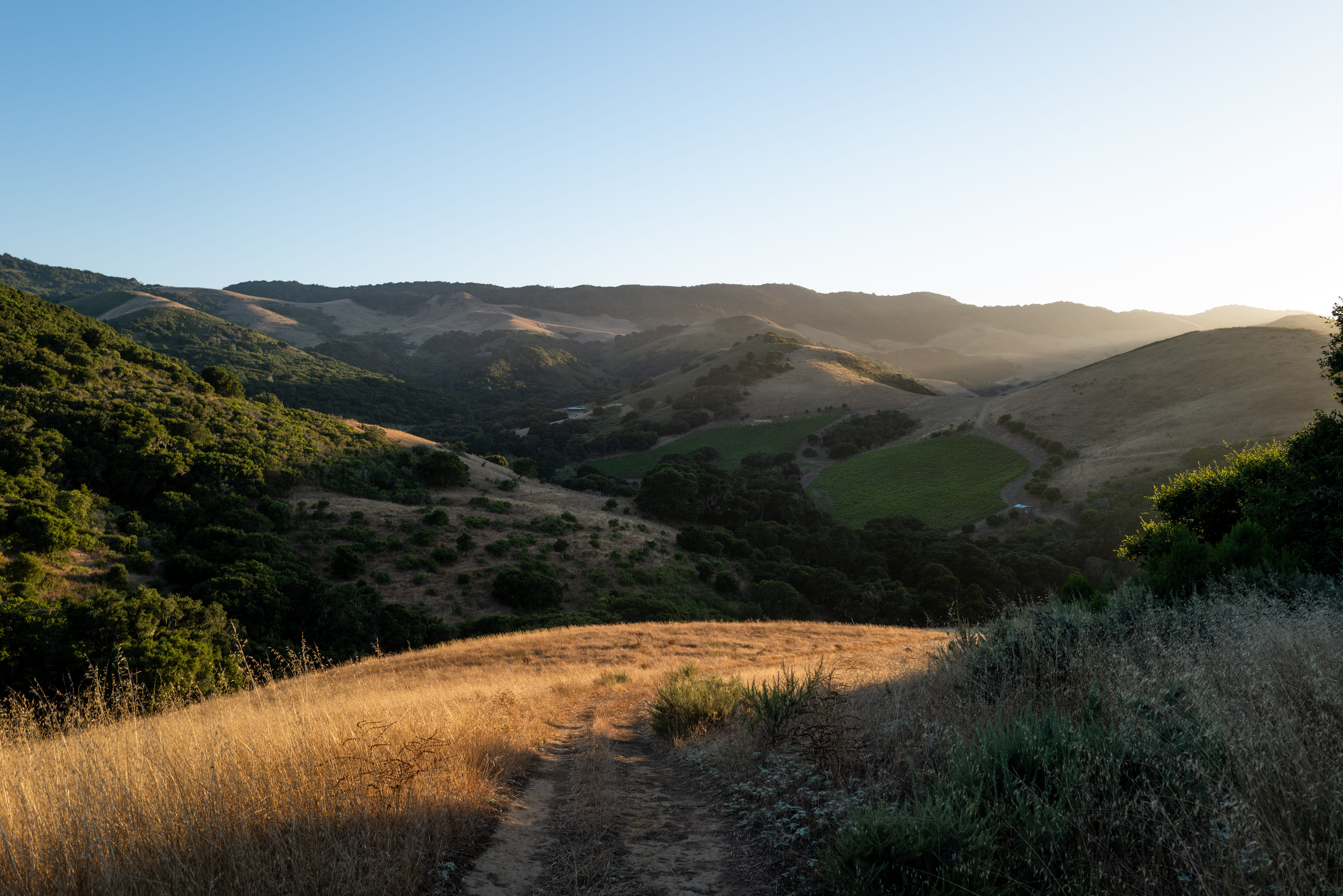
The sun is just starting to light up the delicate green and blush leaves of an elderberry sapling on the chilly morning of November 3, less than 24 hours after the first plants for this project went into the earth at Jalama Canyon Ranch (JCR). The White Buffalo Land Trust bought this 1,000-acre property in April 2022, ambitiously expanding from the original 12-acre spread in Summerland where Steve Finkel founded the organization to honor his late wife.
JCR’s barns and cabins immediately became an educational hub for regenerative ag, but this small elderberry planting is the trust’s inaugural farming endeavor on the property. Featuring about 100 plants set along five gently curved rows sloping toward a creek, this site will serve as the entire project’s demonstration orchard, showing others how best to grow the plant. They’ll be testing seed-based saplings — like most of these initial plants — as well as vegetative cuttings of wild elderberry, like the highly productive shrub that sits in the creek bed a few yards away.
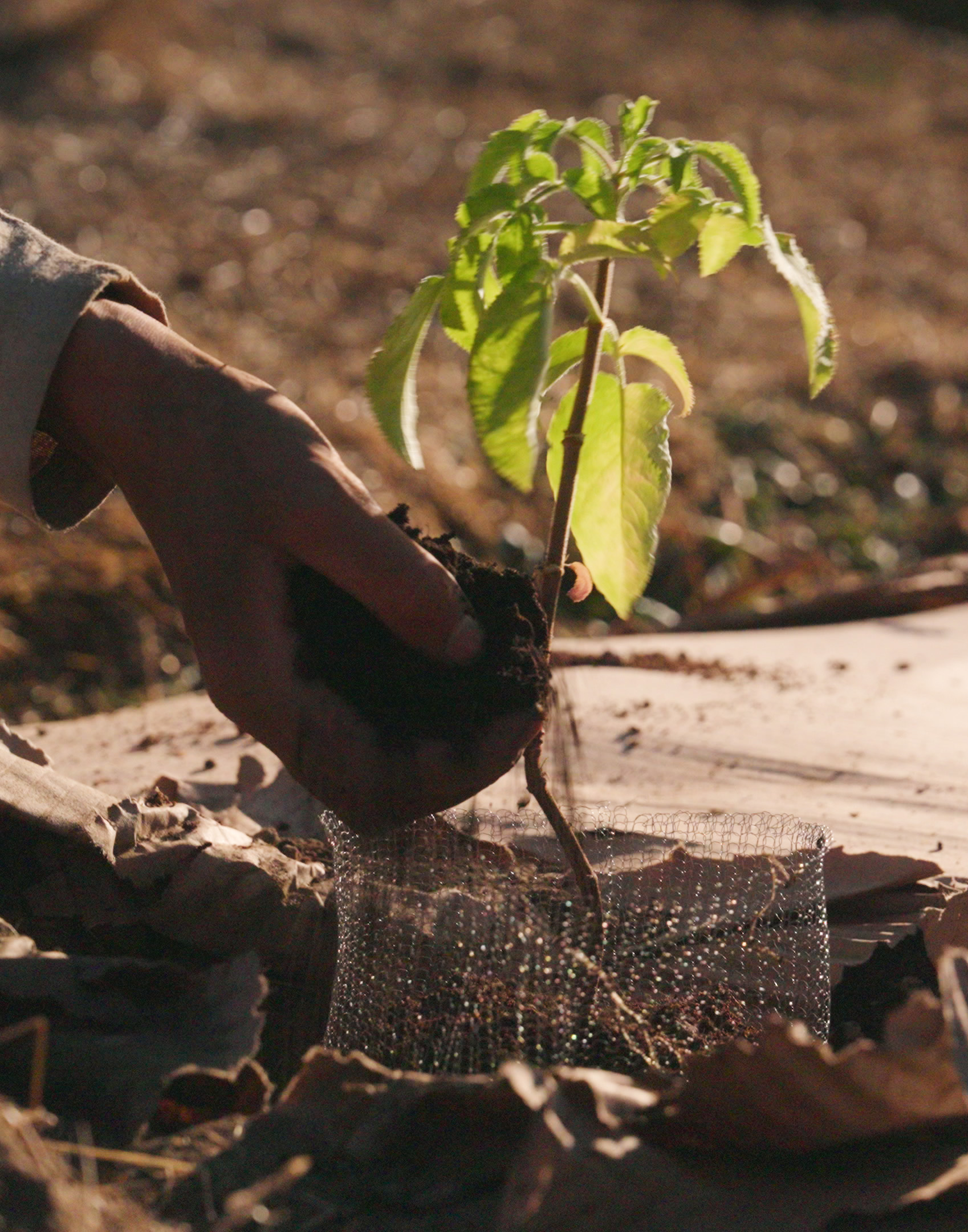
“The economic lens and ecological lens hit the sweet spot on this project,” explains Ana Smith, who lives at JCR and runs White Buffalo’s daily operations with her husband, Jesse Smith. “We already have more requests coming in to take part.”
Given California’s recurrent droughts, Jesse is particularly fired up about elderberry’s ability to survive in the driest of times. “If a grower was to implement irrigation and then found that they had to drastically reduce it, the elderberry would not die,” said Jesse. “You can’t say the same about avocado or coffee or wine grapes or a lot of other things. This is the closest crop that you’re gonna find to a weed.”
Though that week marked the project’s first earth-turning, the paper-pushing started a year and a half earlier, when the White Buffalo team applied for a United States Department of Agriculture (USDA) grant that focused on climate-smart commodities. Of the 140 grants eventually awarded across the country, many dealt with composting and other accepted strategies for large-scale commodities such as soy, grain, dairy, and livestock. “Very few focused on perennial tree crops,” explained Jesse of their elderberry application. “We are definitely part of a distinct minority.”
That’s one reason why, this past spring, the USDA’s undersecretary personally delivered the $4.6 million check to White Buffalo in a small presentation with state and regional resource managers in attendance, one of only seven grantees nationwide to get such direct attention. “They were very excited about the fact that we already had partnerships and relationships in place,” said Jesse, who’s been a leader in eco-minded farming around the region since co-founding Casitas Valley Farm in 2012.
In addition to the demonstration orchard at JCR and two spots at Restoration Oaks — one in the existing blueberry field, the other on denuded land near the oak nursery — the farming partners are Orella Ranch, known for raising heritage pigs, chickens, and cattle on the Gaviota Coast; Chamberlin Ranch, which is a leader in carbon sequestration on cattle pastures in the Santa Ynez Valley; and the Santa Ynez Band of the Chumash, whose Camp Four property will house the elderberry nursery.
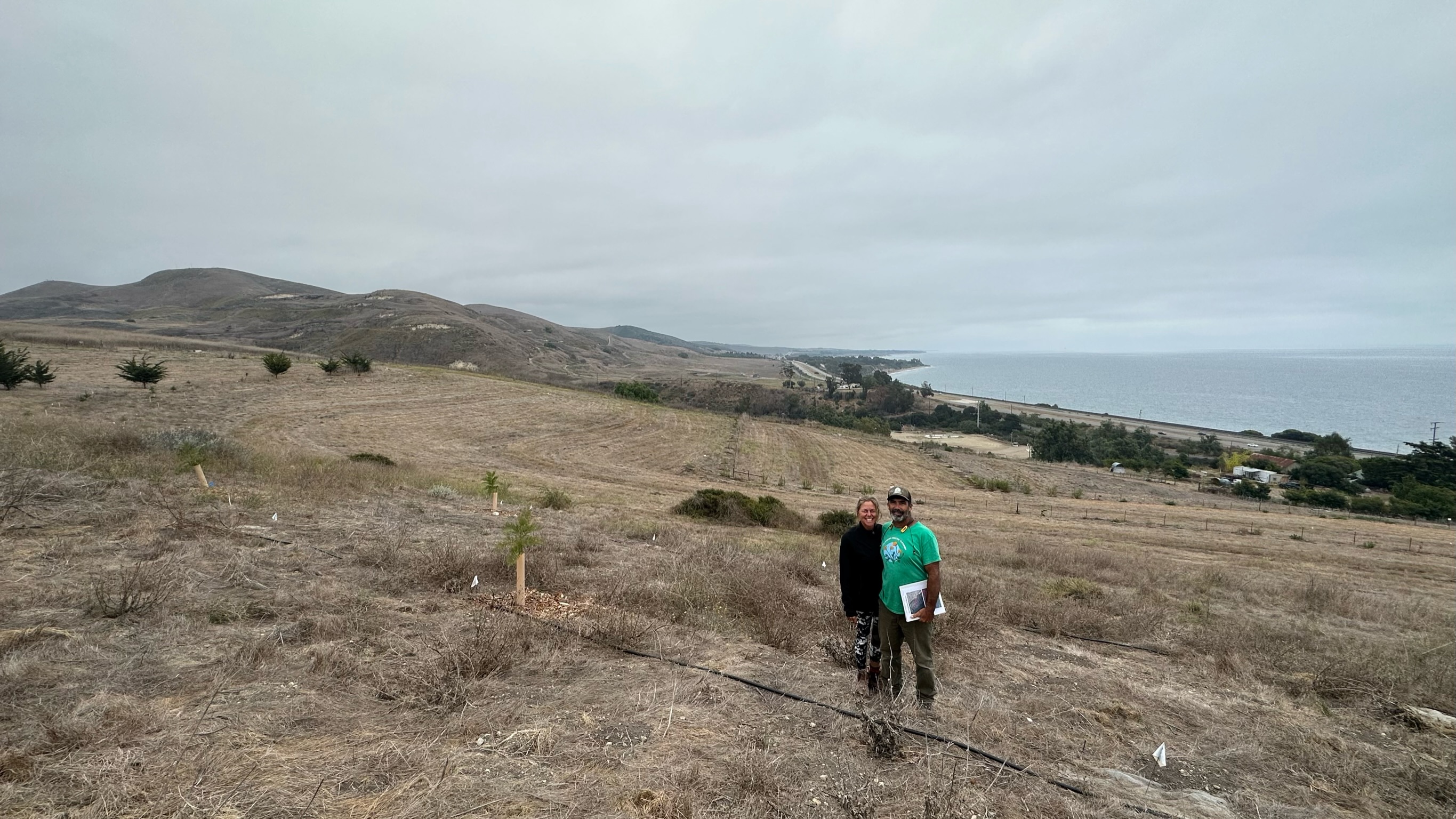
Though those initial partners are based in Santa Barbara County, the grant’s geographic scope actually extends from Los Angeles to Monterey counties, so other farms may get involved down the road. The goal is for every initial property to plant their elderberries by next spring or fall, with commercial-sized harvests starting in 2025.
Then comes stage two. “If you don’t have a place to take raw goods and give them a cursory processing, then you’re never gonna be able to develop a market for producers,” explained Jesse, in part because raw parts of the plant are mildly toxic. “That was a major component of this project: funding the development of a regional processing facility.
Process Pros
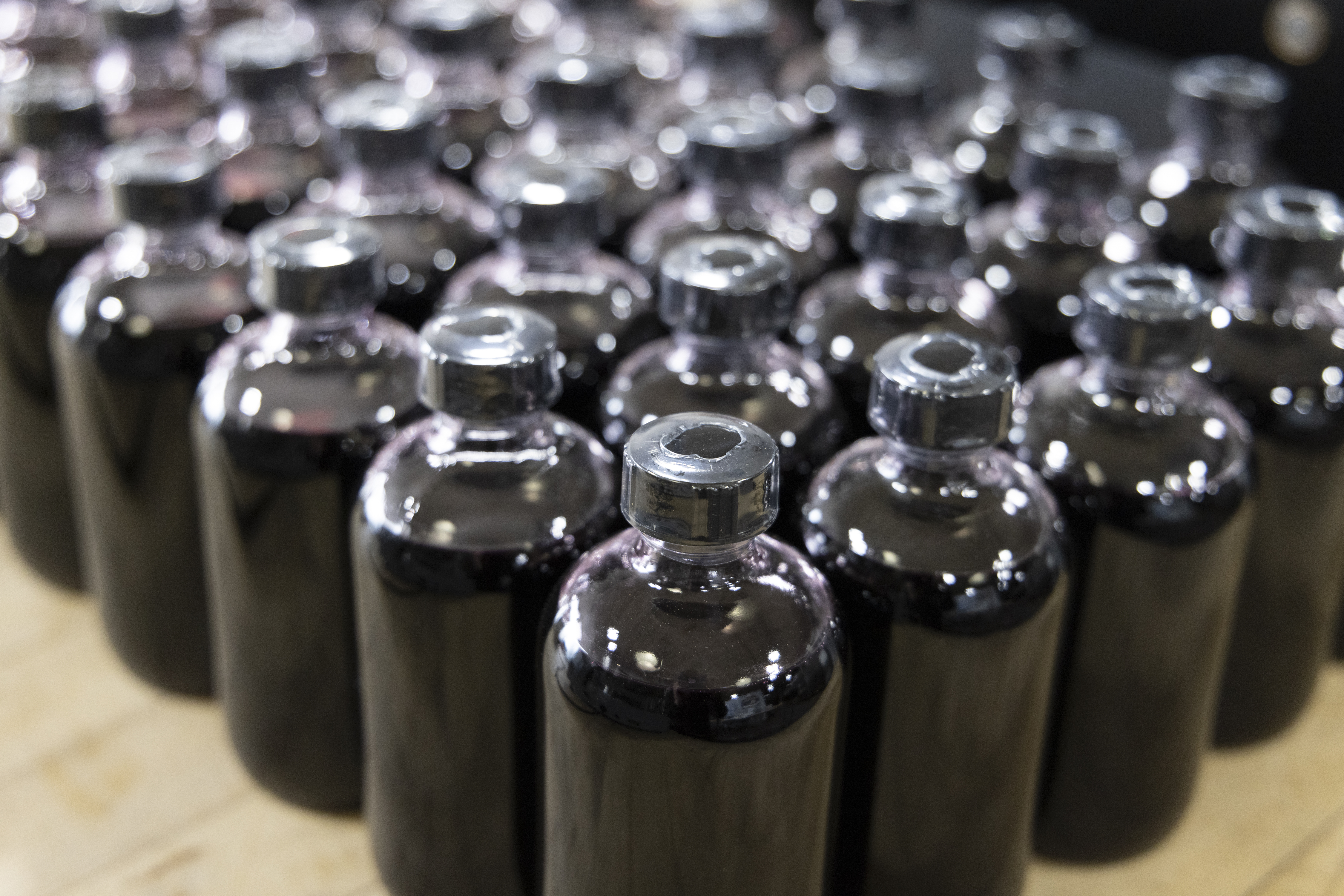
That facility is tucked into the back of a nondescript office/warehouse district just north of the Santa Maria Airport, where I found Jim Crooks that same November day trying to prepare a mostly empty, 4,500-square-foot building for an upcoming food safety inspection. For nearly a quarter-century until departing in the summer of 2022, Crooks was a top brewmaster for Firestone Walker, where he developed the renowned Barrelworks brand that thrived on using native plants, like elderberry, in sour beers.
He also made a chocolate-orange beer, which came from meeting Mike Orlando, the marine biologist-turned-chocolate producer who owns Twenty-Four Blackbirds in Santa Barbara. Introduced years ago by leather smith Steven Soria, the two immediately hit it off, recalled Orlando, who said that Crooks brought an operational understanding to some of his wackier ideas about creating a cacao beverage.
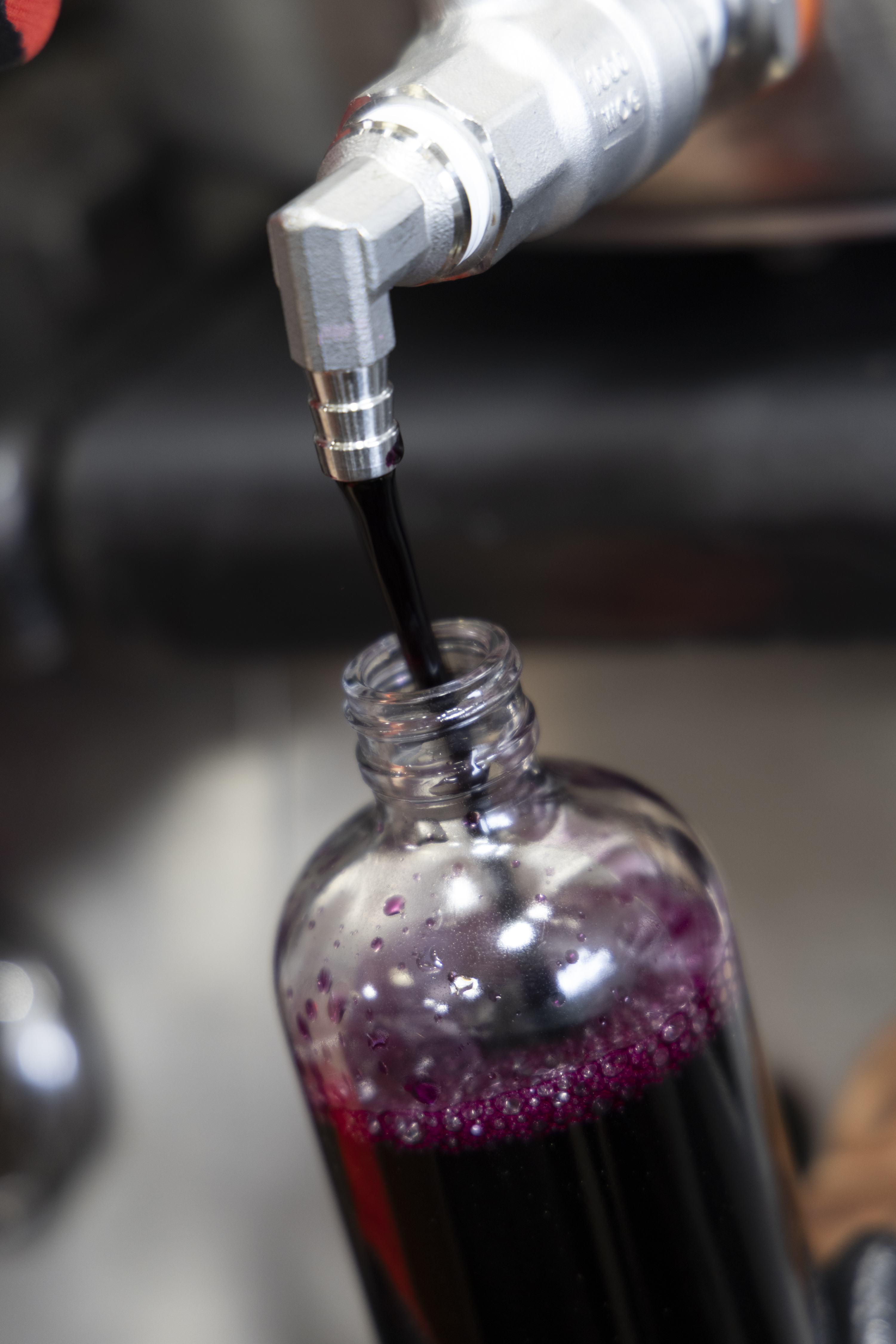
They combined their business acumen to create Jungle Beverage Company, a co-manufacturing company — which means they help other companies develop products and then keg/can/package them. They expect to be hired to create or just package a range of products like vitamin waters, carbonated juices, and caffeinated or alcoholic drinks from this Santa Maria space by sometime next year. As far as they know, Jungle is the first beverage co-manufacturer in Santa Barbara County, but their services may extend much farther.
“There’s an insatiable need for co-manufacturing in California,” said Crooks, who’s built much of the facility with his own hands. “It’s the whole start-up, in-the-trenches feel.”
When their mutual friend Jesse Smith explained the elderberry project to Orlando and Crooks, they realized it could eventually be a part of their business model and agreed to collaborate. “I never considered native plants as stuff you get in our supermarket,” said Orlando, who actually gathered elderberries in junior college for the botany lab. “Why are we not doing that? It’s so environmentally friendly to use natives that it’s mind-boggling that they’re not more common.”
They recognize the hurdles to come. “There are not a lot of blueprints on what to do with sorting elderberries,” said Crooks, but he’s ready to learn. “I’m all about process. I have been since the beginning. You just have to embrace it.”
Once the destemming, sorting, and cleaning issues are managed, the possibilities for future products are rather unlimited. Frozen berries could be sold to larger elderberry product outfits, for instance, or they could make a line of syrups, seltzers, or even alcoholic beverages at Jungle. They’ll likely do a bit of everything to start.
Orlando’s chocolate company will eventually be a customer, too, as he explained, “Twenty-Four Blackbirds will be an end-user as much as Jungle is a processor.”
Elder(berry) Expertise
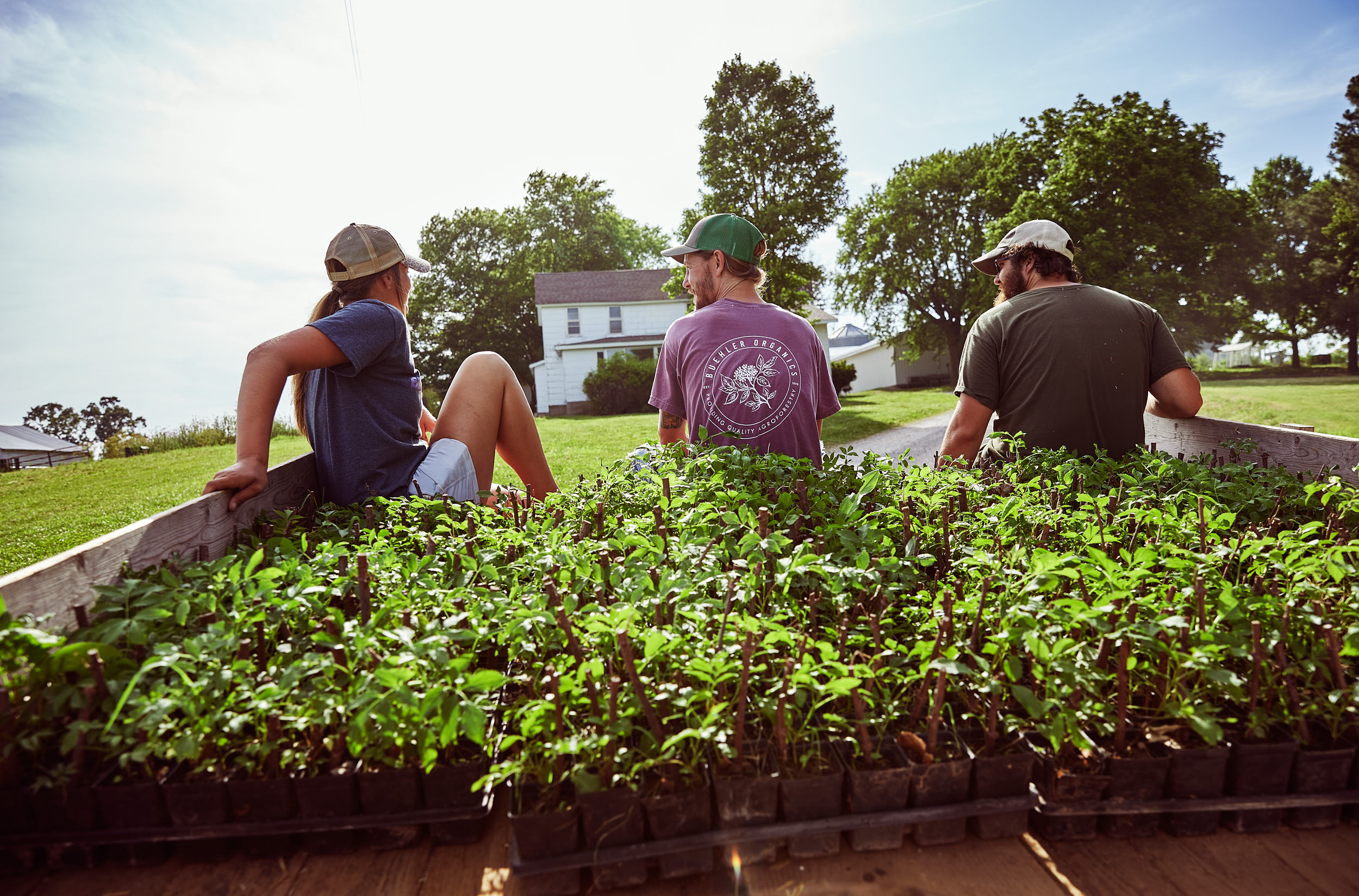
Most commercial elderberries in the United States come from Missouri, where fourth-generation farmer Dave Buehler converted his family’s 120-year-old dairy operation to elderberries little more than a decade ago. “We are passionate about this plant,” Buehler told me over the phone last month. “We see the health benefits of it. We see the opportunity for American farmers to grow this.”
At first, he was lured by the per-acre profit potential, which trumps many tougher-to-grow crops. But he caught the fever when they started making their own products about seven years ago — including wellness syrups from the berries, flower-laced honeys, and a surging skin-care line derived from the leaves — and rebranded as Elder Farms.
“Once we started making finished products, we just had an amazing amount of positive feedback from people,” said Buehler, who’s become a leading elderberry evangelist. “I like being at the very beginning. It’s like the computer revolution.” He’s actively building a national association and developing a regional processing center model that can be replicated elsewhere.
“We’re trying to create a supply chain so we can start eating away from this huge European market,” explained Buehler, who said that the industry is still 95 percent reliant on imported fruit even though he believes American-grown berries to be fresher and healthier. The key is growing more, as the United States’ less than 2,000 acres of commercial elderberries are dwarfed by the 30,000 acres planted in Europe.
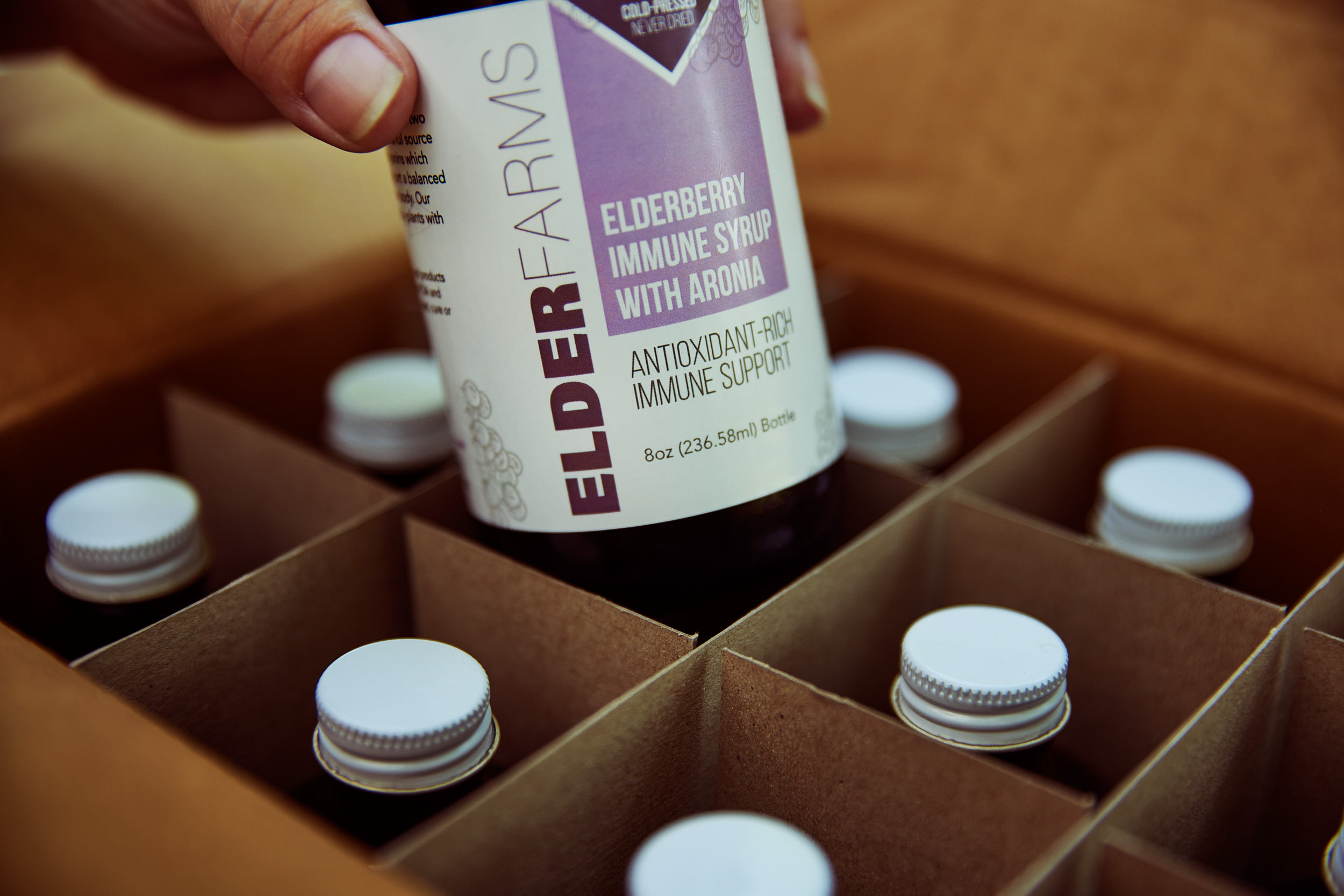
Like he does for many elderberry-intrigued farmers from near and far, Buehler recently hosted White Buffalo’s Jesse Smith at Elder Farms to share insights. “I see California as being the next big state for elderberry,” said Buehler. “I really do.”
The first California entrepreneur to explore that potential is Katie Reneker of Carmel Berry, who started her Monterey County–based company in 2015. “The idea came when my kids were in preschool and coming home with all the germs from preschool. Our whole family would get sick. A month would pass and then there was another round of germs,” said Reneker. “I was looking for a way to naturally support our immune system.”
When she realized elderberry grew everywhere near her home in the Carmel Valley, Reneker compared the syrups she made from the native blue fruit to the commercial black elderberry products that existed at that time. “The taste was so much better than what I was getting at the store,” she said. “I couldn’t believe that nobody realized that it grew all around us. That’s when I decided to do this.”
Carmel Berry began by knocking on doors of neighbors to harvest backyard berries, then grew into a three-acre organic farm that Reneker developed in Greenfield. But that crop was killed by another constant threat to agriculture in California. “Right when it was ready for the first harvest, the landowner sold to a developer, and it was all scrapped,” said Reneker. “It was a great experiment, but we did not get to enjoy the fruits of our labors.”
She shifted her focus to farmers who used elderberries as hedgerows, which were traditionally planted as boundaries between primary crops but have become celebrated for their ability to control erosion and attract beneficial insects and wildlife. But the growth of Carmel Berry — which crafts wellness products as well as a culinary line of vinegars, mixers, syrups, and preserves from both berry and flower — quickly exceeded what hedgerows could provide.
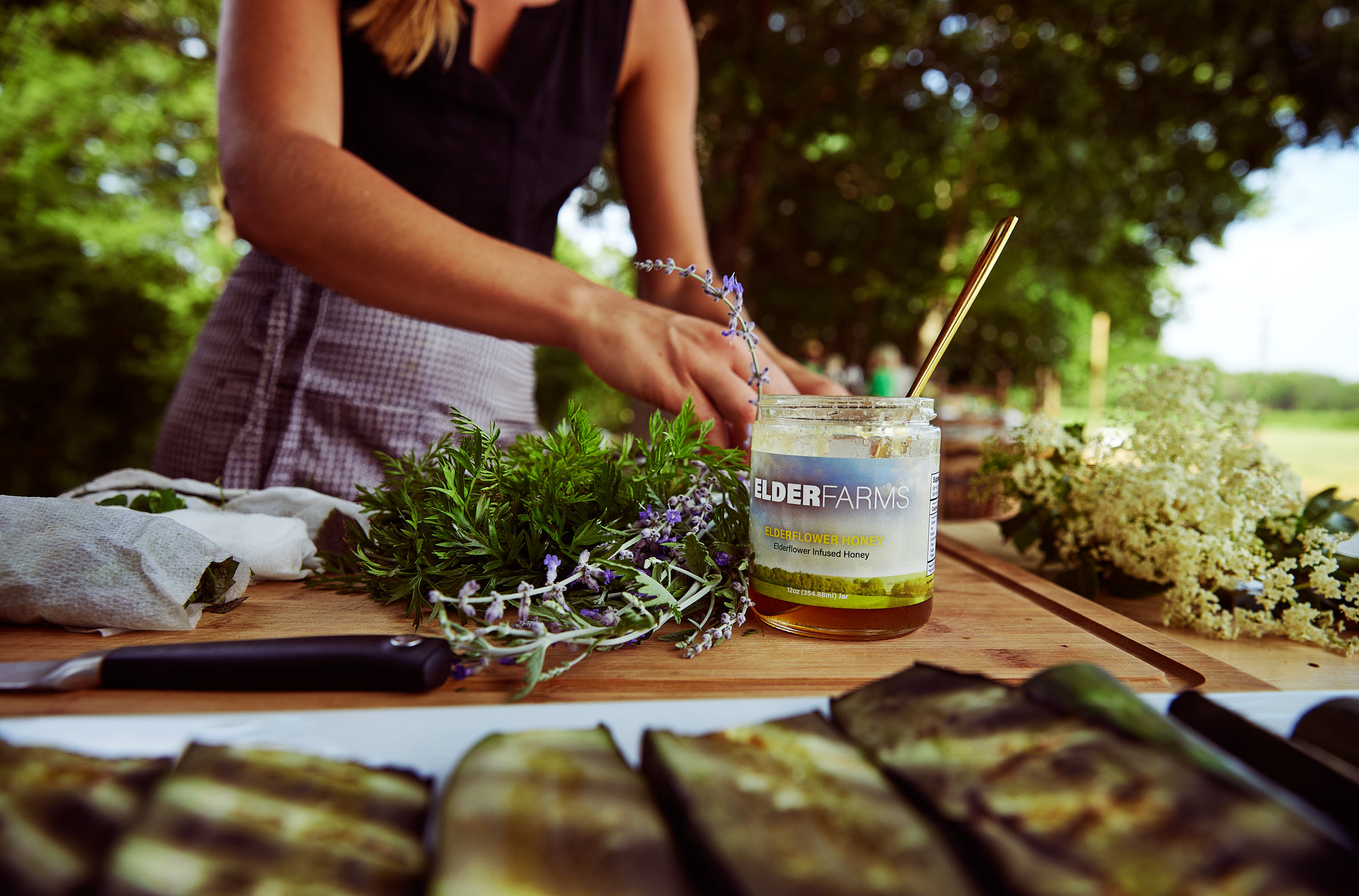
Today, Reneker sources primarily from the Midwest and Pacific Northwest, with just about a quarter of ingredients coming from California, and that’s mostly the elderflowers that she gathers in the Salinas Valley. “There’s just not a reliable source yet,” said Reneker. “Once we dial two things in — the genetics and the propagation — it’s going to be a lot easier to offer blue elderberry as a commercial crop and a commodity. That’s why I am really excited about the White Buffalo project.”
The only other prominent California-based, elderberry-focused company is Dr. Appleseed, owned by Catie Morse up in the Bay Area. She learned about elderberry’s health benefits while a student at UC Santa Cruz. “I just marveled at it,” said Morse, who launched her company in 2016 around Seattle’s farmers’ markets.
A major part of her business, and everyone else’s, is education. As a naturopathic doctor, Morse focuses on sharing information about elderberry’s scientifically documented effectiveness at preventing and treating flus and colds, thanks to its high antioxidant, anthocyanin, and flavonoid content.
Her organically certified products still rely on black elderberries from the Midwest, but Morse sponsors plantings of blue elderberry around her community, which has shown her the challenges in growing the plant successfully. “We’re just refining all of our techniques,” she explained.
Marketing the Message
Few people have thought about the commercial viability of blue elderberry more than Sonja Brigitte Brodt, who’s based in Davis. As the associate director of the University of California’s Sustainable Agriculture Research & Education Program, she studied blue elderberry hedgerows in Yolo and Solano counties from 2017 to 2020, confirming that the species possesses similar nutritional traits to the commercial black elderberry and could theoretically become part of that global market.
“The last thing I’m interested in is seeing elderberry orchards blanketing the state — clearly our information could be used for those purposes, but that’s not what we’re going for,” clarified Brodt. “There is definitely profit that can be made from a hedgerow, which is a really interesting thing that no one ever talked about. It seems like there is potential for success.”
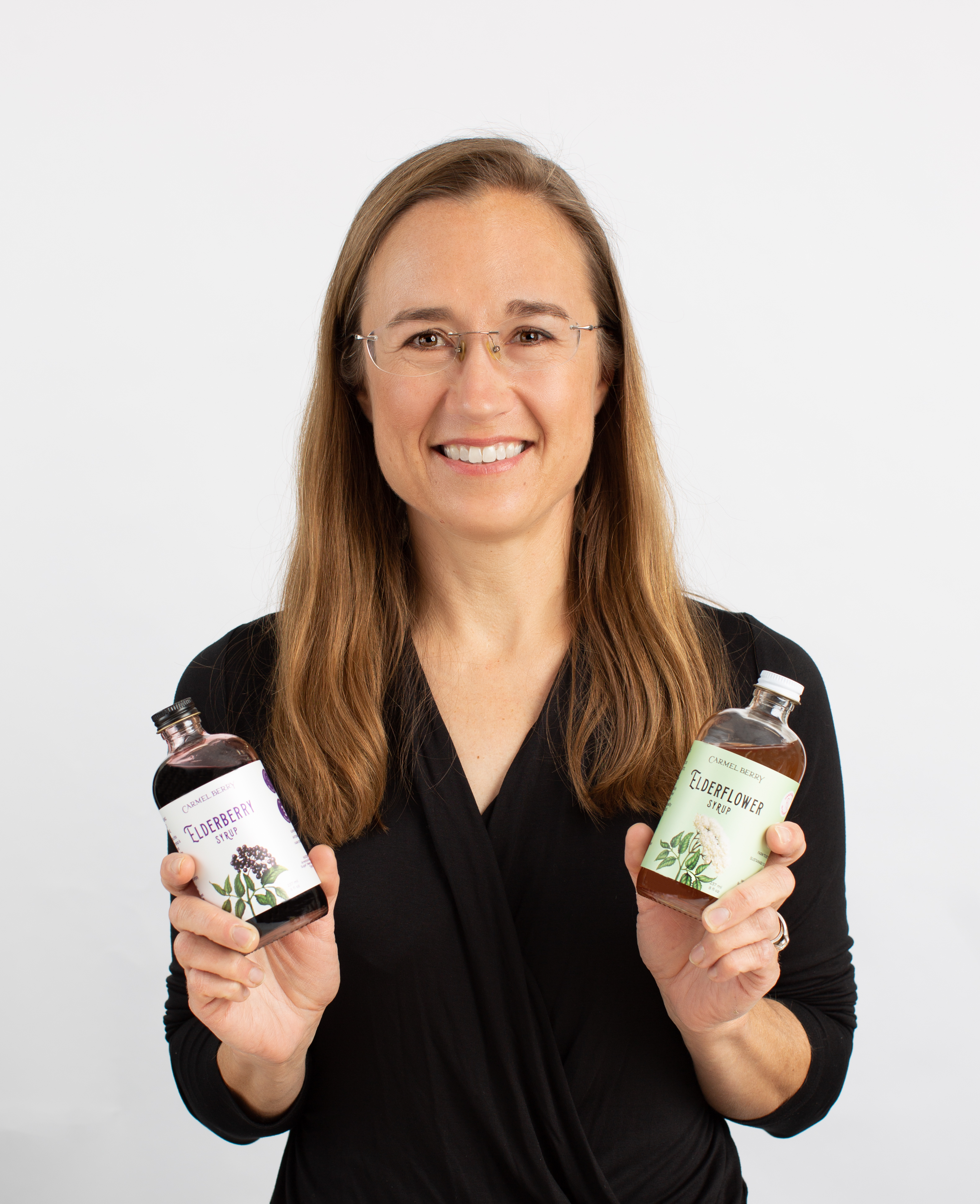
She confirmed that the lack of commercial cultivars is a significant challenge, explaining, “There is a lot of variability from one plant to the next as far as how it grows and what the yield can be.” But attempts to grow black elderberry in California instead haven’t been so fruitful either, at least in the Central Valley. “They really struggled in the summer heat and lost their leaves really early,” said Brodt. “It was just too hot and dry, I guess.”
Her primary concern is whether, once established, California elderberry growers would be able to get the price they need to make a living considering the cheaper products on the marketplace. “How do you explain the whole story of how it’s being grown and what the value of it is in the natural ecosystems and hopefully create a price that’s equitable on both sides?” she asked. “I’m hoping the White Buffalo Land Trust project can make some strides in how to market that.”
Jesse Smith hopes to connect those dots. “The eastern United States is going to continue to be major contributors to the global elderberry market, but I think we’re going to have a very unique resource,” said Smith, who believes that the blue elderberry can star as the hero in a redemption tale of rehydrating and regenerating California’s landscape. “That’s where this project is focused.”
No matter the results five years from now, the White Buffalo project and its many partners can expect plenty of support along the way. “The elderberry world is small, and we all help each other out as much as possible,” said Reneker of Carmel Berry. “It’s a plant that doesn’t belong to one person. It was here for thousands of years before any of us. I always try to keep that in mind.”





You must be logged in to post a comment.